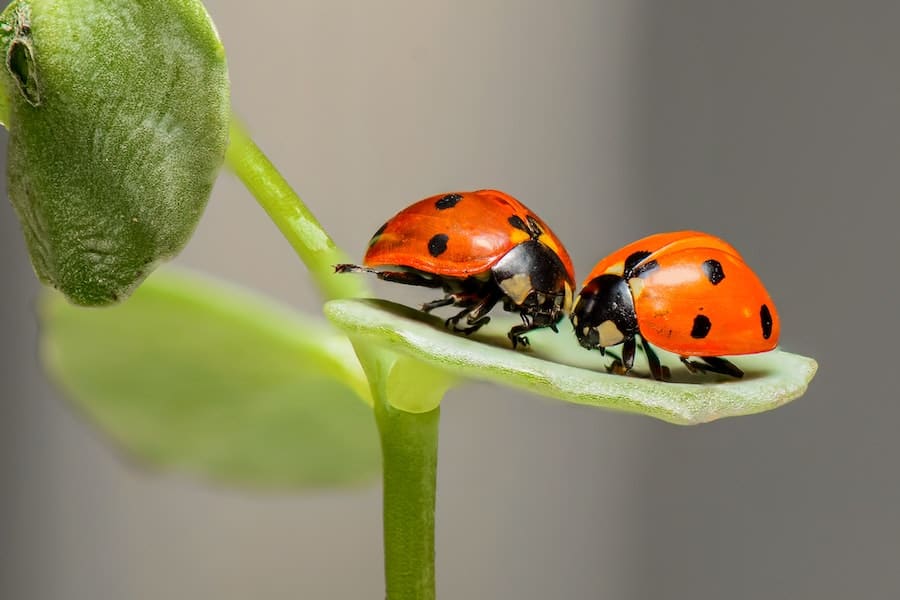Box elder bugs, those small, distinctive insects with dark bodies and striking red markings, are a common sight in many regions. As they gather in large numbers on trees and buildings, it’s natural to wonder about their behavior and potential impact on humans. Among the questions frequently asked is, “Do box elder bugs bite?” In this article, we delve into the world of box elder bugs to unravel their intriguing characteristics, feeding habits, and defensive mechanisms. We aim to shed light on whether these insects pose any risks to us and our surroundings. Understanding these fascinating creatures not only quells our curiosity but also helps us coexist harmoniously with the diverse wildlife around us.
Do Box Elder Bugs Bite?
Yes, box elder bugs can bite, but their bites are relatively rare and harmless to humans. Box elder bugs are primarily plant feeders, and they use their piercing-sucking mouthparts to extract sap from trees and plants. While they may occasionally bite if they feel threatened or cornered, their bites are not venomous and typically cause no more than minor irritation, similar to a mild insect bite. In general, box elder bugs are more of a nuisance due to their congregations in large numbers during certain seasons rather than being a serious threat to people. If you encounter them indoors, it’s best to gently remove and release them outside to maintain a harmonious balance with these harmless insects.
What Are Box Elder Bugs?
Box elder bugs (Boisea trivittata), also known as boxelder bugs, are small, flat insects belonging to the family Rhopalidae. They are primarily found in North America, particularly in the United States and Canada. These bugs are named after the box elder tree, one of their favorite host plants.
Box elder bugs are easily recognizable due to their distinctive appearance. They are about half an inch long and have an elongated, oval-shaped body. Their coloration features a dark brown or black base with vibrant red or orange markings on their wings and thorax, forming a striking contrast.
During the warmer months, box elder bugs are active and feed on the seeds, flowers, and leaves of their preferred host plants, such as box elder trees, maple trees, and ash trees. They use their specialized mouthparts to pierce plant tissues and extract sap as their primary food source.
As the temperature drops in the fall, box elder bugs seek shelter in large groups, often congregating on the sunny sides of buildings, walls, and other structures. They may enter homes and buildings through small cracks and crevices in search of a warm place to overwinter.
While box elder bugs do not pose any significant threat to humans, their aggregations can become a nuisance, especially when they enter buildings in large numbers. However, they are generally harmless insects and play a role in the ecosystem by helping to decompose plant matter and serving as a food source for some predators. Managing box elder bug populations can be achieved through preventive measures and environmentally friendly pest control methods.
Comparing Box Elder Bugs With Similar-Looking Insects
Box elder bugs (Boisea trivittata) are often mistaken for other insects due to their similar appearance. Here’s a comparison of box elder bugs with some of the insects they are commonly confused with:
Milkweed Bugs (Oncopeltus spp.): Milkweed bugs have a similar body shape and size to box elder bugs. They also display red and black coloration, which can lead to confusion. However, milkweed bugs have distinct black bands on their red wings, while box elder bugs have a more solid red or orange marking.
Assassin Bugs (Reduviidae family): Assassin bugs are similar in size and shape to box elder bugs. They have long, narrow body with a prominent, curved beak. While some assassin bugs can have red or orange markings, they typically lack the distinct black markings seen on box elder bugs.
Western Conifer Seed Bugs (Leptoglossus occidentalis): These bugs resemble box elder bugs due to their brownish color and size. However, western conifer seed bugs have a more elongated body and a broader, flattened appearance. Their legs also extend beyond their abdomen, giving them a distinct appearance.
Stink Bugs (Pentatomidae family): Stink bugs can vary in color and size, but some species share similar brownish coloration with box elder bugs. However, stink bugs have a shield-like shape and often have distinctive patterns on their back. Unlike box elder bugs, stink bugs emit an unpleasant odor as a defense mechanism when threatened.
Harlequin Bugs (Murgantia histrionic): Harlequin bugs have a colorful and patterned appearance, often featuring red, orange, and black markings. While they are not as similar to box elder bugs as some other insects on this list, their vibrant coloration can lead to confusion, especially in regions where both insects are present.
Differences In Behavior And Feeding Preferences
Feeding Habits:
Box Elder Bugs: Box elder bugs are primarily herbivores and feed on the sap of host plants, including box elder trees, maple trees, and ash trees. They use their piercing-sucking mouthparts to extract sap from the phloem of these plants. While they can cause minor damage to the host plants, they are generally not considered significant pests for agriculture or horticulture.
Overwintering Behavior:
Box Elder Bugs: During the fall, box elder bugs gather in large groups on the sunny sides of buildings and structures as the temperatures drop. They seek shelter to overwinter, and occasionally, they may find their way inside homes and buildings through small openings. Their overwintering behavior can make them a nuisance, but they are not known to cause significant structural damage.
Defensive Mechanisms:
Box Elder Bugs: When threatened, box elder bugs may release a pungent and foul-smelling odor as a defense mechanism. This odor is similar to the smell of stink bugs, though not as potent.
Activity Patterns:
Box Elder Bugs: Box elder bugs are most active during the warmer months when they feed on plant sap. They are diurnal insects, meaning they are active during the daytime. The activity patterns of other insects may vary. Some are diurnal, like box elder bugs, while others may be more active during the evening or night.
Impact On Human Health And Safety
Box elder bugs do not pose any significant risk to human health and safety. They are generally considered harmless to humans and do not transmit diseases. However, there are a few considerations related to their presence that may be relevant:
- While rare, some individuals may experience mild allergic reactions to box elder bugs or their droppings. These reactions can manifest as skin irritation or respiratory symptoms in sensitive individuals. However, such cases are infrequent and not a common concern.
- During the fall, box elder bugs congregate in large numbers on the sunny sides of buildings and structures as they seek shelter for overwintering. Their presence in such aggregations can become a nuisance, especially when they find their way indoors through tiny openings. While they do not cause structural damage or health issues, their presence indoors may bother some people.
- In rare cases, box elder bugs can enter homes and buildings in significant numbers, leading to indoor infestations. While they do not bite or cause structural damage, their congregations can be unsightly and require removal and management.
- When threatened, box elder bugs may release a foul-smelling and unpleasant odor as a defense mechanism. While not harmful, this odor can be bothersome to some people.
Box Elder Bug Bites: Symptoms And Treatment
Box elder bugs are not known to bite humans aggressively or cause significant harm. They primarily feed on plant sap and use their piercing-sucking mouthparts to extract nutrients from trees and plants. However, on rare occasions, they may bite humans if they feel threatened or are mishandled, but their bites are generally harmless and do not require medical treatment.
Symptoms of Box Elder Bug Bites:
- If a box elder bug bites, the sensation is typically mild and may feel like a slight pinch or irritation at the site of the bite.
- The area around the bite may become slightly red and swollen, but the reaction is minimal and short-lived.
- Some individuals may experience mild itching around the bite site, but this is usually not severe.
Treatment for Box Elder Bug Bites:
- If bitten by a box elder bug, wash the affected area with soap and water to prevent infection.
- To alleviate any mild swelling or discomfort, apply a cold compress or ice wrapped in a cloth to the bite site for about 15 minutes.
- If itching persists, over-the-counter hydrocortisone creams or calamine lotion can help reduce the irritation.
- Resist the urge to scratch the bite, which may lead to further irritation and potential infection.
- In most cases, box elder bug bites do not require medical attention. However, if you experience an allergic reaction or severe symptoms, such as excessive swelling, difficulty breathing, or hives, seek immediate medical help.
Conclusion
Box elder bugs are fascinating insects commonly found in North America, recognized by their distinctive red and black markings. These harmless creatures primarily feed on plant sap and play a minor role in the ecosystem by helping to decompose plant matter and providing a food source for some predators. While box elder bugs are not aggressive towards humans, and their bites are rare and generally harmless, their congregations in large numbers during the fall can be a nuisance, especially when they seek shelter indoors. However, through simple preventive measures like sealing cracks and gaps, homeowners can reduce the chances of indoor infestations and ensure peaceful coexistence with these insects.
FAQ’s
Are box elder bugs dangerous?
Box elder bugs are not dangerous to humans. They do not transmit diseases and do not cause structural damage. However, their congregations in large numbers can be a nuisance, especially when they seek shelter indoors during the fall.
How do I prevent box elder bugs from entering my home?
To prevent box elder bugs from entering your home, seal cracks and gaps around doors, windows, and walls. Also, consider removing box elder trees or other preferred host plants near your home.
What do box elder bugs eat?
Box elder bugs primarily feed on the sap of host plants, including box elder trees, maple trees, and ash trees. They use their piercing-sucking mouthparts to extract sap as their primary source of nutrition.




















Leave a Reply